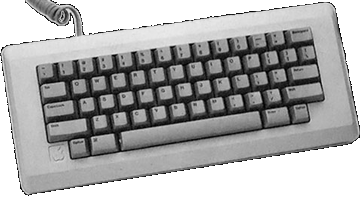iPhone 5

Essentials
Family: iOS
Codename: ?
Minimum OS: iOS 6.0
Maximum OS: iOS 8.4
Introduced: September 2012
Terminated: September 2013
Processor
CPU: Apple A6 (Swift)
CPU Speed: 1.3 GHz
CPU Cores: 2
FPU: integrated
Bus Speed: ?
Register Width: 32-bit
Data Bus Width: 64-bit
Address Bus Width: 32-bit
Level 1 Cache: 32 kB data, 32 kB instruction
Level 2 Cache: 1 MB on-processor
Onboard RAM: 1 GB
Maximum RAM: 1 GB
Video
Screen: 4" multi-touch
GPU: 3-core 266 MHz PowerVR SGX 543MP3 (via A6)
Max Resolution: 1136x640 ("Retina")
Video Out: HDMI, VGA (via Lightning adaptors), AirPlay
Camera: 8 MP back (w/LED flash), 1.2 MP front
Storage
Flash Drive: 16/32/64 GB
Input/Output
Lightning: 1
Audio Out: stereo 16 bit mini
Speaker: mono
Microphone: mono
Sensors: Accelerometer, Proximity sensor, Ambient light sensor, Three-axis gyro
Networking
Wi-Fi: 802.11a/b/g/n
Bluetooth: 4.0
Cellular:
- Model A1428 (GSM, North America)
- UMTS/HSPA+/DC-HSDPA (850, 900, 1700/2100, 1900, 2100 MHz)
- GSM/EDGE (850, 900, 1800, 1900 MHz) LTE (Bands 4 and 17)
- CDMA EV-DO Rev. A and Rev. B (800, 1900, 2100 MHz)
- UMTS/HSPA+/DC-HSDPA (850, 900, 1900, 2100 MHz)
- GSM/EDGE (850, 900, 1800, 1900 MHz); LTE (Bands 1, 3, 5, 13, 25)
- UMTS/HSPA+/DC-HSDPA (850, 900, 1900, 2100 MHz)
- GSM/EDGE (850, 900, 1800, 1900 MHz); LTE (Bands 1, 3, 5)
Location: Assisted, GLONASS, Digital Compass, Wi-Fi, Cellular
Miscellaneous
Battery Life:
- Talk 8 hrs (3G)
- Standby 225 hrs
- Internet 8 hrs (3G/LTE), 10 hrs (Wi-Fi)
- Video 10 hrs
- Audio 40 hrs
Dimensions: 4.87" H x 2.31" W x 0.3" D
Weight: 0.25 lbs.

Introduced in September 2012, the iPhone 5 further codified the 2-year iPhone release cycle, with both a visual redesign and significant hardware changes. The most significant change was to the screen dimensions; for the first time since the original iPhone, the aspect ratio was changed, from 4:3 to 16:9, allowing another row of app icons in the home screen. As with the introduction of the resolution-doubling "retina" display in the iPhone 4, apps not specifically optimized for the iPhone 5 would run, but with a slightly more visually jarring effect: non-optimized apps ran with black "letterboxed" bands above and below the screen content.
The iPhone 5 was taller and thinner than the iPhone 4S it replaced, but continued its basic design language; the major visual change was the replacement of the glass back with aluminum. It came in two glass/metal color combinations: white/silver and black/slate. In order to achieve a thinner case design, Apple also chose to replace the 30-pin dock connector (largely unchanged since the iPod (Dock Connector) was released nine years prior) with a new 8-pin connector, which Apple called "Lightning." The Lightning cable was much smaller, and reversible. While an adapter was made available to connect old dock connector accessories to the new port, some feature, such as analog audio transport, were no longer available.
The iPhone 5 included an Apple-designed A6 system-on-a-chip, which boasted considerable speed improvements. Whereas prior A-series chips had included a licensed CPU design from ARM, the dual-core CPU in the A6 was custom designed by Apple to deliver improved performance with reduced energy usage. With the addition of a 3-core graphics sub-system, Apple claimed a 2x speed increase for both processing and graphics.
As with the iPhone 4S, the iPhone 5 was available in both GSM and CDMA models in North America and GSM-only internationally, but it also received a significant upgrade to the much faster LTE data standard (AT&T and Apple had marketed HSPA+ as "4G" in the iPhone 4S, but most other carriers reserved the "4G" moniker for LTE). Other hardware improvements included improved optics for the rear-facing camera (the resolution remained 8 MP, though the iPhone 5 included the ability to take 28 MP "panorama" pictures, stitched together by software), and increased resolution for the front-facing camera.
The iPhone 5 was available at three price-points, based on flash capacity:
- 16 GB / $199 ($649 unsubsidized)
- 32 GB / $299 ($749 unsubsidized)
- 64 GB / $399 ($849 unsubsidized)
The iPhone 5 was discontinued a year later with the release of the iPhone 5s.
Picture Credits:
Apple, Inc.
